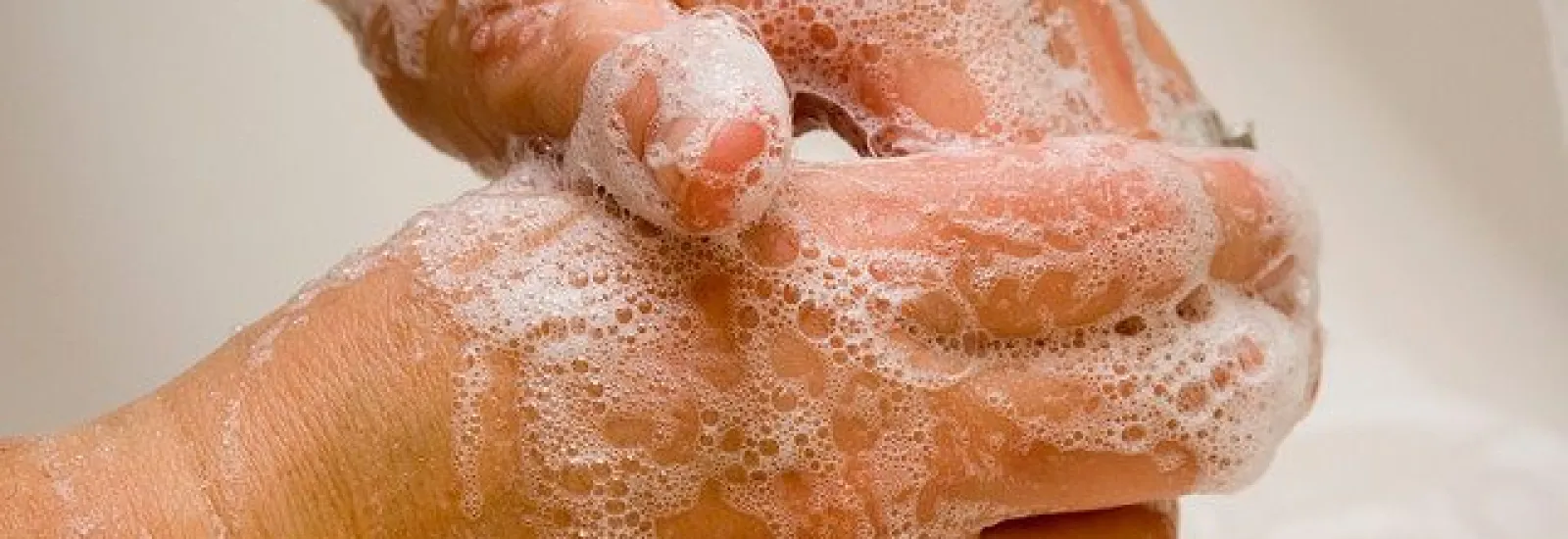
Wash your hands to keep germs at bay!
Cold and flu season is here again. One of the best ways to prevent the spread of germs this time of year is to wash your hands regularly and thoroughly. To keep fall and winter from becoming memorable for all the wrong reasons it's important to know the proper method of washing your hands. This is good not only for your own health but for the health of others too!
Why worry so much?
Proper handwashing can decrease the risk of contracting and spreading diarrheal illnesses (such as norovirus or infections from Salmonella or E. coli) by 31 percent as well as respiratory illnesses (adenovirus hand-foot-mouth disease and the common cold) by 16-21 percent according to the Centers for Disease Control and Prevention (CDC). So it follows that not washing your hands increases your risk of many preventable illnesses and diseases. As you go through your day you'll touch many surfaces containing bacteria and viruses which can enter your body through mucus membranes such as the eyes nose and mouth. Remembering to wash your hands helps prevent that from happening.
Proper handwashing technique
Handwashing with soap and water removes oils and breaks up dirt particles to be washed away. To properly wash your hands follow the guidelines below from the World Health Organization. The entire process should take only about 40 to 60 seconds which isn't a big time commitment when you consider the payoff of keeping yourself healthy.
- Wet your hands with warm water and apply a generous amount of soap.
- Rub your hands palm to palm.
- Place your right palm over the back of your left hand washing the backside of the hand and between your fingers. Repeat with left hand.
- Place your hands palm to palm and rub your palms together and in between your fingers.
- Place the top of your fingernails in the palm of the opposite hand and rub. Repeat with the other hand.
- Place the right thumb in your clasped left hand and rotate. Repeat with the left thumb.
- Rotationally rub back and forward with clasped fingers of the right hand into the left palm. Repeat with the left hand.
- Rinse your hands with clean water.
- Dry your hands thoroughly with a paper towel.
- Use the paper towel to turn off the faucet.
When to wash your hands
Understanding when to wash your hands is as essential as knowing how to do it. Make sure to definitely wash your hands when you encounter these situations:
- After using the bathroom
- After changing a baby's diaper
- After touching public door handles handrails elevator buttons or light switches.
- After handling money
- After shaking hands
- After touching animals
- After contact with a sick person
- After blowing your nose
- Before during and after food preparation
- Before eating
- When your hands are visibly dirty
Dispelling handwashing myths
Can very hot water really kill more germs? Here's the truth behind some of the most popular handwashing myths.
- Myth 1: You can substitute handwashing by creating heat through friction.
False. You'd have to generate the amount of heat necessary for bacteria to die during cooking which FoodSafety.gov notes is about 165 degrees — which isn't something you can do through the friction of rubbing your hands together! That's even a temperature too hot for your skin. The only way rubbing your hands together is beneficial to removing germs is when you're doing it while using soap and water. - Myth 2: Food smells such as onion and garlic can be removed from your hands by rubbing a stainless steel faucet.
True — But. Although stainless steel does seem to be effective at removing strong food odors according to Lifehacker it's not a substitute for actually washing your hands. Rubbing your hands all over your faucet makes you also run the risk of picking up and transferring germs from the faucet to your food. The only way to ensure safe food handling is by practicing good handwashing techniques. - Myth 3: Very hot water kills more germs.
False. This myth claims that washing your hands with water that's 104 to 131 degrees kills more germs. The upper limits of this temperature range are too hot for human skin and could irritate your skin disturb protective skin layers and decrease your bacteria resistance. As noted by National Geographic researchers discovered that with proper handwashing bacteria on the skin can be decreased even in 40 degree water.
Yes there's no getting around it: Handwashing with soap and warm water is the most effective way to reduce germs on your hands. If soap and warm water are not available a 60 percent alcohol-based hand sanitizer can prevent the spread of germs says the CDC. So keep yourself healthy — and your hands clean — this cold and flu season!
Image credit: Flickr


The best way to remove food smells like onion or garlic is to rub your hands with milk. This is a tested method.